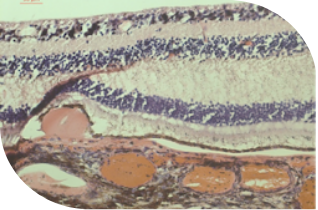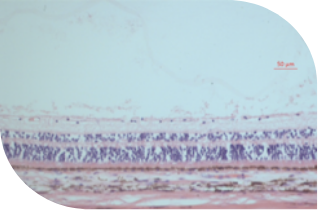Bio Repository
Our bio repository was funded through the generosity of the Francis and Gertrude Levett Foundation. It houses a bank of ocular tissue with age-related macular degeneration, glaucoma, diabetic retinopathy, and other blinding eye diseases. It also allows us to keep a stock of frozen cultured cells for when our research partners need them.
These include:
- Culturing of primary ocular cells: trabecular meshwork, retinal pigment epithelial cells, corneal endothelial cells, laminal cribrosal cells
Adjacent to our tissue recovery bank is our 2,000 square foot laboratory space for performing on-site research. This includes 600 square feet of space dedicated to cell, tissue, and organ culture.
We are skilled at culturing of primary ocular cells: trabecular meshworks, retinal pigment epithelial cells, corneal endothelial cells, and laminal cribrosal cells. We also have some stock of low-passage primary cells from trabecular meshworks, Tenon’s fibroblasts, and laminal cribrosal cells.
In addition, the Lions World Vision Institute Ocular Research Center can offer our clients on-site facilities for:
- Research lab space for client-supplied specialized equipment
- Customized on-site experiments using human ocular tissues under greatly reduced post-mortem time intervals
- An anterior chamber organ perfusion system that allows long-term (7-10 day) examination of the human aqueous outflow system
- Some stocks of low-passage primary cells from trabecular meshwork, Tenon’s fibroblasts, laminal cribrosal cells
- Histological sections of normal and diseased tissues (cryosections and paraffin), sections from paraffin and OCT blocks from diseased and age- matched control donors.
Our bio repository was funded through the generosity of the Francis and Gertrude Levett Foundation. The bio repository houses a bank of ocular tissue with age-related macular degeneration, glaucoma, diabetic retinopathy, and other blinding eye diseases. We can offer sections from paraffin and OCT blocks from diseased and age-matched control donors.
For further information please contact our team: Research@LWVI.org


